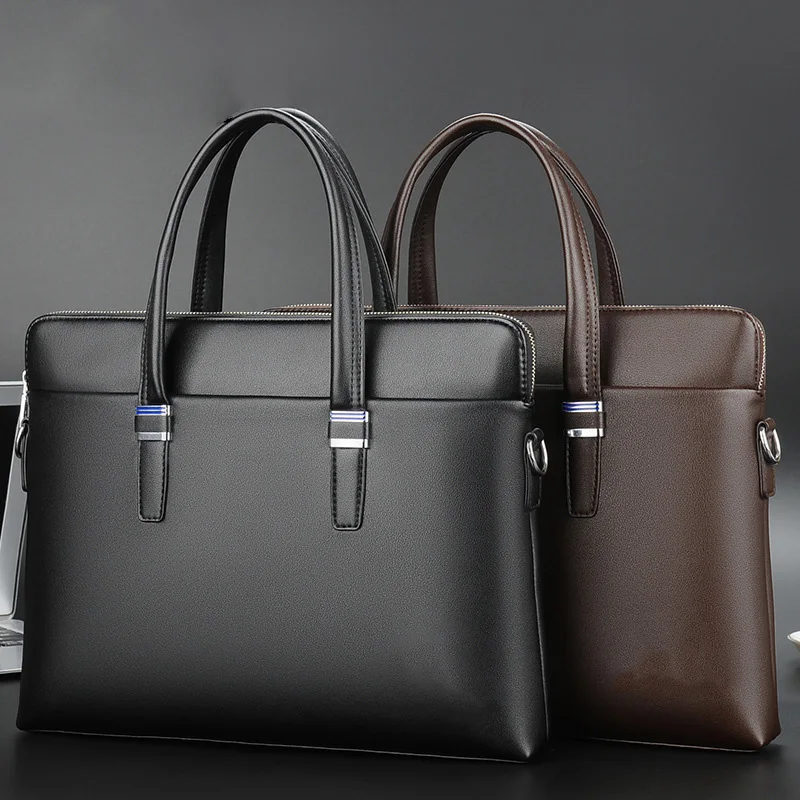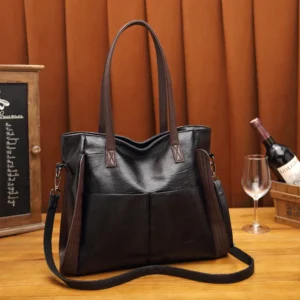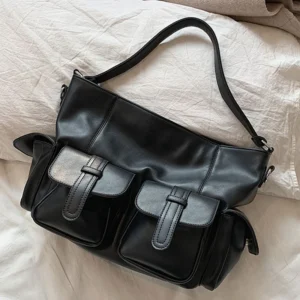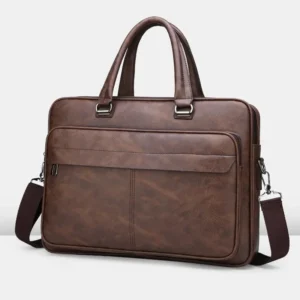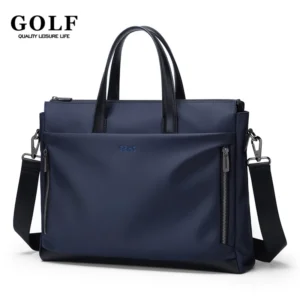Introduction: Understanding Vegan Leather and Its Rising Popularity
Vegan leather refers to any material designed to look and feel like traditional animal leather without using any animal products. These alternative materials mimic the texture, appearance, and functionality of conventional leather while offering ethical advantages for conscientious consumers.
The demand for vegan leather alternatives has experienced remarkable growth in recent years, driven by three key factors that have reshaped the accessories market. First, ethical concerns about animal welfare have prompted many consumers to seek products that don’t contribute to the suffering associated with traditional leather production. Second, environmental consciousness has increased as people become more aware of the substantial ecological footprint of conventional leather—which accounts for approximately 8-10% of the fashion industry’s carbon emissions through livestock raising, chemical tanning processes, and water pollution.
Finally, there’s been a significant consumer shift toward products that align with sustainability values without sacrificing quality or style. This trend extends beyond just avoiding animal products to considering the entire environmental impact of manufacturing processes and materials.
As these alternatives continue to improve in quality and variety, they’re becoming increasingly attractive options for consumers who want to make choosing timeless classic leather briefcase decisions without compromising their ethical standards. Understanding the various benefits of vegan leather helps consumers navigate the growing marketplace of cruelty-free alternatives.
Vegan Leather Categories: Understanding Your Options
Vegan leather alternatives fall into three main categories, each with distinct characteristics, production methods, and environmental impacts. Understanding these categories helps you make informed choices when selecting cruelty-free accessories:
Plant-based vegan leathers: Derived from natural, renewable resources like fruit waste, leaves, mushrooms, and other plant materials. These options often have lower environmental impacts and represent the most innovative segment of the market.
Synthetic vegan leathers: Man-made materials typically produced from petroleum-based compounds like polyurethane (PU) and polyvinyl chloride (PVC). While animal-free, these options have varying environmental considerations.
Innovative emerging materials: Cutting-edge alternatives that blend advanced technology with sustainable resources, often combining elements of both plant-based and synthetic materials to maximize performance.
Each category offers different benefits and considerations regarding sustainability, durability, feel, and appearance. Many modern professional non-leather work bags incorporate these materials in sophisticated designs that rival traditional leather options. For professional settings, vegan leather work totes showcase how these materials can combine functionality with ethical values.
Plant-Based Vegan Leathers: Sustainable Innovation from Nature
Plant-based vegan leathers represent the most exciting frontier in sustainable material development. These innovative alternatives utilize agricultural waste, sustainable crops, and natural resources to create leather-like materials with significantly lower environmental footprints than both animal leather and many synthetic alternatives.
What makes plant-based options particularly appealing is their natural origin combined with the circular economy approach many of them take—transforming what would otherwise be waste into valuable, functional materials. The resulting products often require less water, generate fewer greenhouse gas emissions, and reduce reliance on fossil fuel-derived ingredients.
Let’s explore the most promising plant-based vegan leather alternatives transforming the market today.
Pineapple Leather (Piñatex): From Agricultural Waste to Fashion Statement
Piñatex has emerged as one of the most recognized plant-based leather alternatives. Created from pineapple leaf fibers—a byproduct of pineapple harvesting that would otherwise be burned or left to rot—this innovative material gives new life to agricultural waste while providing additional income to farming communities.
The manufacturing process involves extracting fiber from the leaves, which undergoes enzymatic processing before being formed into a non-woven mesh and finished with resin coatings. While these coatings (often containing some petroleum-derived components) mean Piñatex isn’t fully biodegradable, it still offers significant sustainability advantages over conventional options.
Texture-wise, Piñatex has a distinctive feel that’s both flexible and durable with good tensile strength. Its naturally fibrous appearance gives products a unique character that many designers appreciate. Major brands like Hugo Boss and H&M have incorporated Piñatex into their collections, demonstrating its growing mainstream acceptance.
Mushroom Leather (Mycelium): The Future of Bio-Fabricated Materials
Mycelium leather represents one of the most promising frontiers in sustainable material innovation. Created from the root structure of mushrooms grown on agricultural waste like sawdust or corn husks, mycelium-based leather requires minimal resources, grows rapidly, and can be produced with little land use or water consumption.
The bio-fabrication process involves growing mycelium in controlled environments where it forms an interconnected network of tiny fibers. Once harvested, the material undergoes processing to enhance its durability and appearance. The resulting material is remarkably leather-like—soft, pliable, and with a natural grain pattern that mimics animal hide.
Companies like Bolt Threads with their Mylo material have partnered with luxury brands including Stella McCartney and Adidas to develop products using mushroom leather. While current formulations still require some synthetic components for durability, research continues to improve both performance and sustainability aspects.
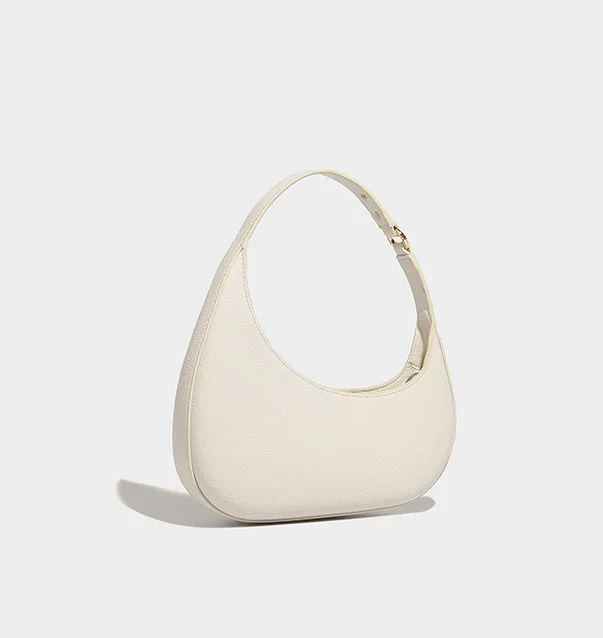
Cactus Leather (Desserto): Desert Sustainability
Desserto, made from nopal cactus leaves in Mexico, exemplifies how desert plants can create sustainable materials. This innovative leather alternative uses mature cactus leaves harvested every 6-8 months without damaging the plant, which continues growing without irrigation—making it extremely water-efficient.
The production process requires significantly fewer resources than animal leather, with no additional watering needed due to the cactus’s natural drought resistance. After harvesting, the leaves are dried in the sun before processing into a leather-like material that contains some polyurethane for durability.
Desserto has gained recognition for its soft, flexible texture and excellent durability. It’s breathable, partially biodegradable, and has found applications in automotive interiors, fashion accessories, and furniture. Its natural resistance to UV light and ability to withstand tensile forces make it particularly suitable for products that endure regular use.
Other Plant-Based Innovations: The Growing Ecosystem
The plant-based vegan leather market continues to expand with new materials emerging regularly. These innovative options each offer unique characteristics and sustainability benefits:
Apple leather: Created from apple waste from the juice industry, this material repurposes cores and skins into a leather-like material. It’s particularly popular in high-end accessories.
Cork leather: Harvested sustainably from cork oak trees without cutting them down, cork provides natural water resistance and flexibility. It’s biodegradable and exceptionally lightweight.
Grape leather: Made from waste generated by the wine industry, including skins, stalks, and seeds. The material is both utilizing waste and creating a durable alternative with a distinctive texture.
Mirum: A fully plastic-free plant-based leather alternative made without any synthetic polymers or petroleum, addressing the biodegradability limitations of other options.
Other emerging innovations include materials made from banana fiber, coconut waste, and coffee grounds—demonstrating how many agricultural byproducts can transform into sophisticated materials. Shoppers looking for these innovative materials can find them in professional vegan leather briefcases that combine ethics with workplace functionality.
Synthetic Vegan Leathers: Traditional Alternatives Examined
Synthetic vegan leathers have dominated the alternative market for decades, providing the first widely available options for those seeking animal-free accessories. These materials remain significant in the marketplace due to their consistent performance, lower cost, and manufacturing scalability.
While plant-based options represent the cutting edge of innovation, synthetic leathers still account for the majority of vegan leather products on the market today. Understanding their composition, benefits, and limitations helps consumers make informed choices about their purchases.
Polyurethane (PU) Leather: The Common Alternative
Polyurethane leather (often called PU leather) has become the most widespread synthetic leather alternative. It consists of a fabric backing coated with polyurethane, a polymer that can be manipulated to closely mimic leather’s texture and flexibility.
From an environmental perspective, PU leather has advantages over both traditional leather and PVC alternatives. It requires less energy to produce than animal leather, avoids toxic chemicals used in tanning, and doesn’t release the harmful chlorine compounds associated with PVC. However, it’s still petroleum-based, not biodegradable, and releases microplastics as it wears.
Recent innovations have improved PU leather’s sustainability profile, including water-based formulations that reduce solvent use and versions incorporating recycled materials. These improvements have made it increasingly popular for durable faux leather work bags in professional settings.
PU leather offers excellent performance characteristics—it’s lightweight, flexible, water-resistant, and can be produced in virtually any color. Its breathability surpasses PVC alternatives, making it more comfortable for items worn against the skin. While it typically doesn’t last as long as high-quality animal leather, proper care can extend its lifespan considerably.
PVC and Other Synthetic Materials: Weighing Performance Against Impact
Polyvinyl chloride (PVC) leather, sometimes called vinyl, represents an older generation of synthetic leather alternatives. While still used in some products, its significant environmental concerns have led many brands to phase it out.
PVC production involves chlorine—an energy-intensive process that generates hazardous byproducts. The material often contains phthalates (plasticizers that increase flexibility) which have raised health concerns. Additionally, PVC doesn’t biodegrade and is difficult to recycle, creating significant end-of-life issues.
Performance-wise, PVC offers excellent water resistance and initial durability at a low cost. However, it tends to crack over time, especially when exposed to temperature fluctuations or UV light. It’s also less breathable than other options, making it uncomfortable for extended contact with skin.
Other synthetic alternatives include microfiber-based materials that use fine synthetic fibers to create a suede-like texture. While these typically don’t contain PVC, they still consist of petroleum-derived materials with associated environmental concerns.
Evaluating Vegan Leather: What to Consider
When choosing between the growing array of vegan leather options, several key factors can help guide your decision-making process. Each material offers different advantages and compromises across environmental, performance, and ethical dimensions.
Black Leather Satchel, Brown Leather Satchel, Vegan Leather Work Tote
Price range: $69.58 through $73.23 Select options This product has multiple variants. The options may be chosen on the product pageBlack Leather Messenger Bag, Black Leather Work Tote, Faux Leather Work Tote
$101.88 Select options This product has multiple variants. The options may be chosen on the product pageBlack Leather Work Tote, Faux Leather Work Tote, Women's Leather Business Tote
Price range: $88.81 through $93.85 Select options This product has multiple variants. The options may be chosen on the product pageBlack Leather Satchel, Faux Leather Work Tote, Vegan Leather Work Tote
$120.38 Select options This product has multiple variants. The options may be chosen on the product pageMen's Slim Leather Briefcase, Slim Leather Laptop Briefcase, Vegan Leather Briefcase
Price range: $120.82 through $131.11 Select options This product has multiple variants. The options may be chosen on the product pageClassic Laptop Briefcase, Vegan Leather Briefcase
$244.29 Select options This product has multiple variants. The options may be chosen on the product page
The ideal choice often depends on your personal priorities and how you’ll use the product. A bag that needs to withstand daily commuting requires different properties than an occasionally-used dress belt. Understanding these evaluation criteria helps you make choices aligned with both your values and practical needs.
INTERNAL_LINK: /product-category/vegan-leather-messenger-bag/ (for professional messenger options in vegan materials)
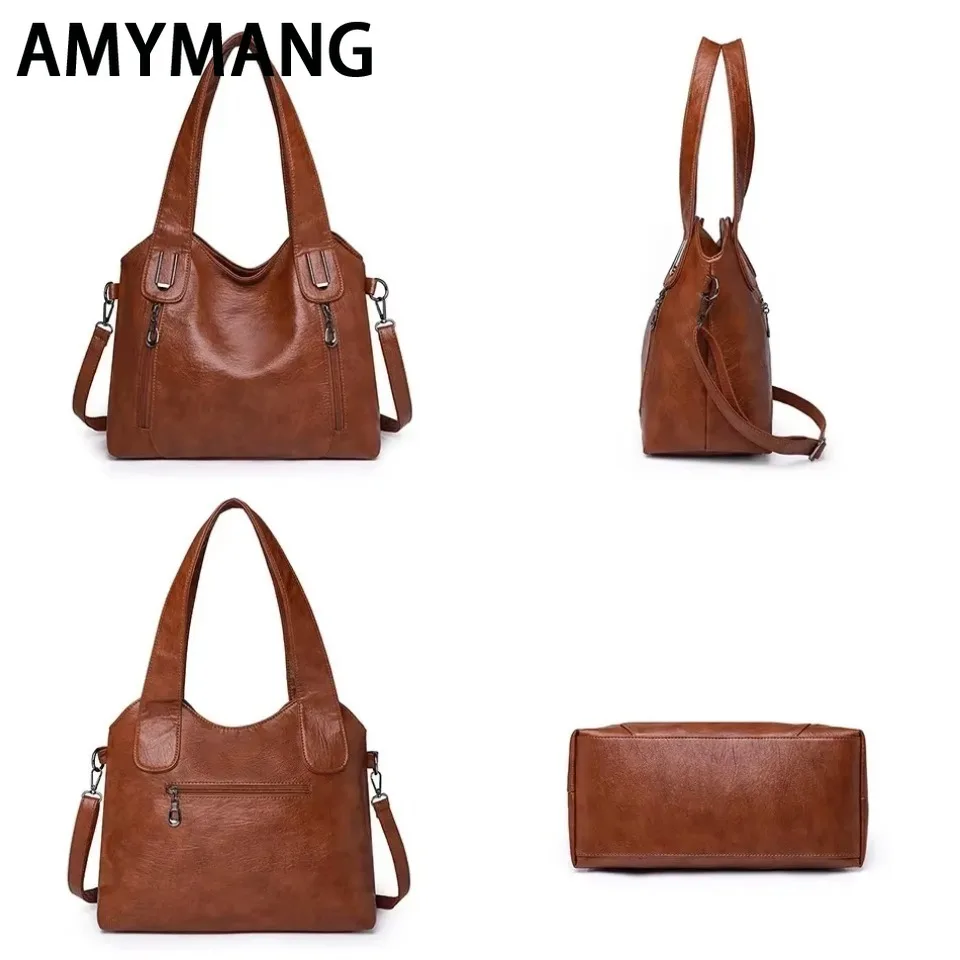
Environmental Metrics: Understanding True Sustainability
Assessing the environmental impact of vegan leather alternatives requires looking beyond simple “natural versus synthetic” categorizations to examine their full lifecycle impact:
Carbon footprint: Consider emissions generated throughout production, use, and disposal. Some plant-based options have significantly lower carbon footprints, but processing and finishing treatments can offset these advantages.
Water and resource usage: Plant-based materials generally require less water than animal leather, but some need substantial water during crop cultivation. Synthetic options use less water but rely on non-renewable petroleum resources.
Biodegradability: Fully biodegradable options remain limited, as even many plant-based leathers contain synthetic components for durability. Materials like Mirum represent progress toward fully biodegradable alternatives.
Chemical usage: Both synthetic and some plant-based options use chemical treatments during production. Water-based polyurethanes and less toxic processing methods represent improvements worth looking for.
Be cautious of greenwashing with materials marketed as “plant-based” that contain only small percentages of natural materials mixed with predominantly synthetic components. Look for transparency about material composition and processing methods when assessing environmental claims.
Performance Factors: Durability, Feel, and Function
The practical performance of vegan leather significantly impacts both its environmental footprint (through longevity) and user satisfaction:
Durability expectations: Most vegan leathers won’t match the multi-decade lifespan of high-quality animal leather, but quality options should last several years with proper care. Synthetic options often show wear through surface abrasion, while plant-based alternatives may develop different patinas over time.
Feel and flexibility: Materials vary significantly in their hand-feel. Newer alternatives have dramatically improved the sensory experience, with options like mushroom leather offering remarkably leather-like properties.
Moisture resistance: Consider how the material handles rain, spills, and humidity. Some plant-based options require protective treatments to match the water resistance of synthetic alternatives.
Maintenance requirements: Different materials need different care routines to maintain appearance and extend lifespan. Some options are more sensitive to heat, direct sunlight, or specific cleaning products.
For professional environments where durability matters, exploring top-rated durable faux leather briefcases can help identify options that maintain their appearance through daily use.
Real-World Applications: How Brands Are Using Vegan Leather
Vegan leather alternatives have transcended their early reputation as inexpensive substitutes to become desirable materials in their own right. Today, these materials appear across multiple industries and price points, from affordable everyday items to luxury statements.
In fashion accessories, brands from Stella McCartney to Matt & Nat have built their identities around sophisticated vegan materials. Their handbags, wallets, and belts demonstrate how alternative materials can achieve luxury aesthetics and performance without animal products. The footwear industry has similarly embraced innovation, with companies like Veja and Allbirds incorporating plant-based components into their designs.
The automotive sector represents another frontier for vegan leather, with Tesla, Volvo, and Mercedes-Benz offering animal-free interior options. These applications demand exceptional durability and resistance to UV damage, pushing material innovation forward. Similarly, furniture manufacturers like IKEA have introduced vegan leather options that meet rigorous performance standards for daily use.
For professionals seeking high-quality work accessories, non-leather work bags combine sophisticated design with ethical materials suitable for business environments.
Future Innovations: What’s Next for Vegan Leather
The vegan leather landscape continues evolving rapidly, with research addressing current limitations and exploring entirely new approaches. Several promising developments point toward an even more sustainable and high-performing future.
Bio-engineered materials represent one exciting frontier, with companies developing lab-grown collagen—the protein that gives animal leather its structure—without involving animals. This approach could eventually deliver material with identical properties to traditional leather but without ethical concerns.
Circular design approaches are gaining momentum, focusing on materials designed from the outset for recycling or composting at end-of-life. These closed-loop systems aim to eliminate waste entirely rather than merely reducing it.
Scaling remains a significant challenge for many innovative materials. As production volumes increase, prices should decrease, making these options more accessible to mainstream consumers. Industry partnerships between material developers and major brands are accelerating this transition by providing the investment needed to build manufacturing capacity.
Making Conscious Choices: How to Select the Right Vegan Leather
When choosing vegan leather products, start by identifying your personal priorities. Are you most concerned about environmental impact, durability, aesthetics, or price? Understanding your own hierarchy of values helps navigate the inevitable trade-offs between different options.
Look for transparency in material descriptions. Brands committed to sustainability will provide specific information about their materials rather than vague terms like “eco-friendly” or “green.” Certifications like PETA-Approved Vegan, Global Organic Textile Standard (GOTS), or OEKO-TEX can provide additional verification of environmental and ethical claims.
Consider the product’s intended use and lifespan. A heavily-used item like a daily work bag may justify investing in the most durable option available, while occasional-use accessories might allow prioritizing other factors. Understanding the fundamentals of choosing the best messenger bag material can help apply these principles across different product categories.
Remember that even the most sustainable material choice is undermined if the product isn’t well-constructed. Look for quality stitching, hardware, and design that will stand the test of time regardless of the specific vegan leather used.
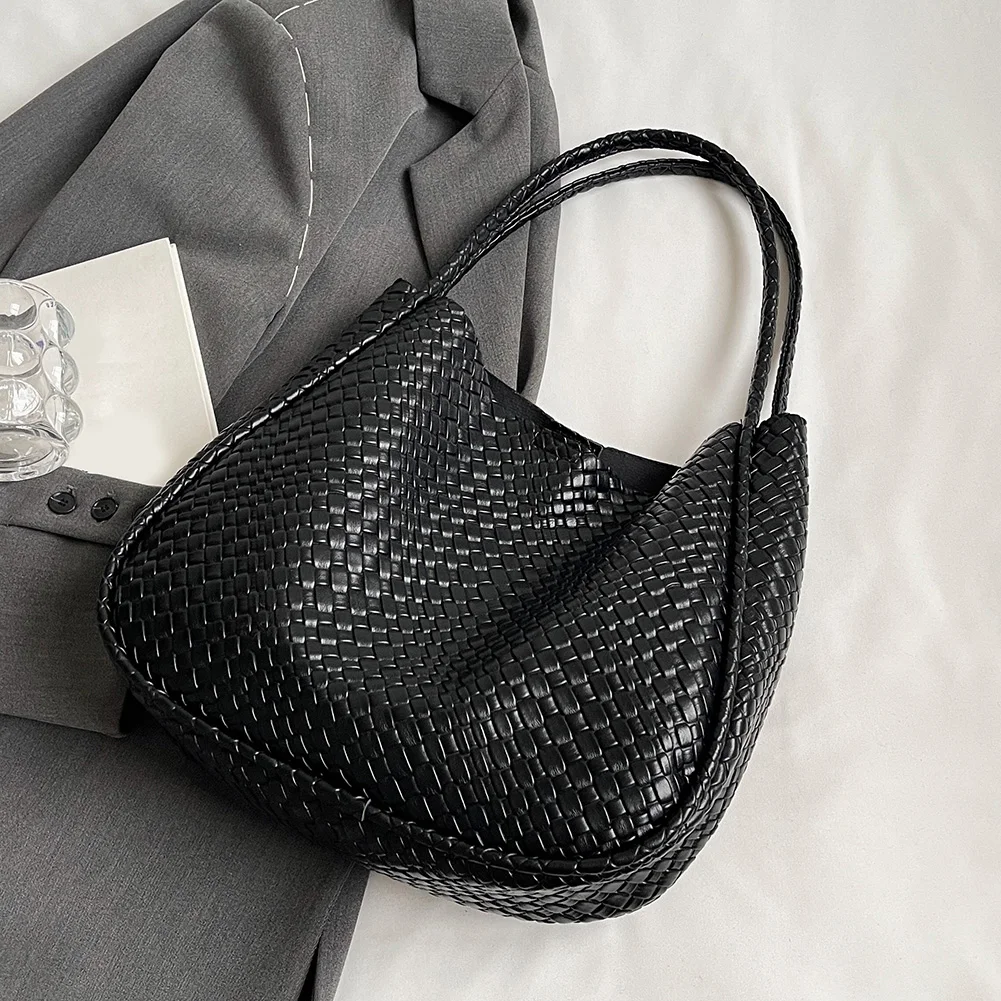
FAQ: Common Questions About Vegan Leather
Is all vegan leather eco-friendly?
No, not automatically. While all vegan leather avoids animal welfare concerns, environmental impact varies dramatically between materials. Synthetic options like PVC have significant environmental downsides, while plant-based alternatives generally offer better sustainability profiles. Always research the specific material rather than assuming “vegan” equals “eco-friendly.”
Which vegan leather is most durable?
High-quality polyurethane (PU) currently offers the best combination of durability and widespread availability. Among plant-based options, cactus leather (Desserto) and mycelium-based materials show promising longevity. Durability also depends greatly on the manufacturing quality and how well the product is maintained.
How do you care for vegan leather products?
Most vegan leathers benefit from regular cleaning with a damp cloth and mild soap, followed by thorough drying away from direct heat sources. Avoid harsh chemical cleaners, alcohol-based products, and extended sun exposure. Some plant-based leathers may benefit from occasional application of specific protectants—check the manufacturer’s recommendations.
Is vegan leather cheaper than real leather?
Generally yes, though with significant variation. Basic synthetic vegan leathers are typically much less expensive than animal leather. However, premium plant-based alternatives can approach or sometimes exceed the cost of mid-range animal leather, reflecting their innovative production processes and smaller manufacturing scale.
Can vegan leather be recycled?
Recyclability varies by material. Most synthetic vegan leathers cannot be recycled through conventional programs due to their composite nature (fabric backing with synthetic coating). Some newer plant-based options are designed for biodegradability, but may not be suitable for home composting. The recycling landscape is improving as manufacturers increasingly design with end-of-life considerations.
For a deeper dive into all these topics, our definitive guide to vegan leather alternatives covers each material in greater detail.
Closing the Loop: Caring for Your Vegan Leather Products
Proper maintenance significantly extends the life of vegan leather products, maximizing their sustainability regardless of material type. Simple care routines make a substantial difference in longevity.
For regular cleaning, use a soft cloth dampened with mild soapy water, then wipe with a clean damp cloth to remove soap residue. Allow the item to air dry completely away from direct heat sources or sunlight, which can cause warping or color fading. For synthetic vegan leathers, occasional application of a small amount of petroleum-free moisturizer helps prevent cracking.
Store vegan leather items properly by stuffing bags to maintain their shape and using dust bags or pillowcases to protect from dust and light exposure. Avoid hanging bags by their handles for extended periods, as this can cause strain and deformation at stress points.
If small damages occur, address them quickly before they worsen. Some vegan leathers can be repaired with specialized patches or adhesives designed for synthetic materials. When a product eventually reaches the end of its useful life, research whether the manufacturer offers take-back programs or find local textile recycling options that accept synthetic materials.
By extending product lifespan through proper care, you amplify the environmental benefits of choosing vegan leather while enjoying your accessories for years to come.

